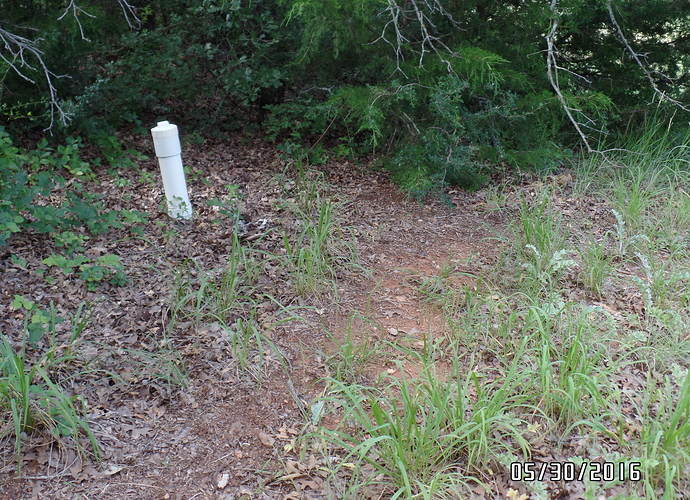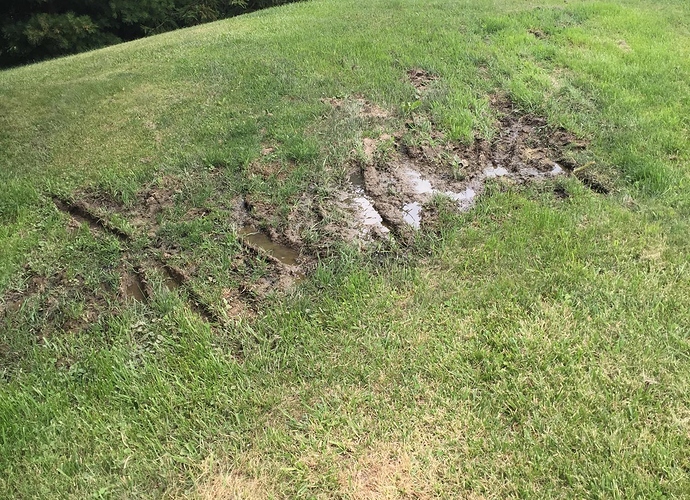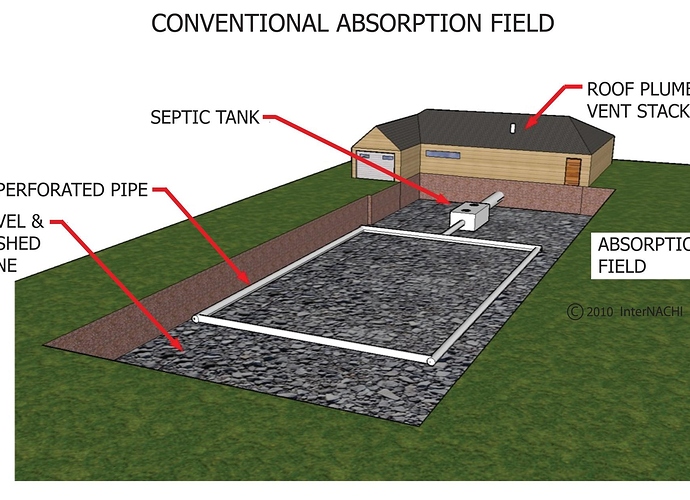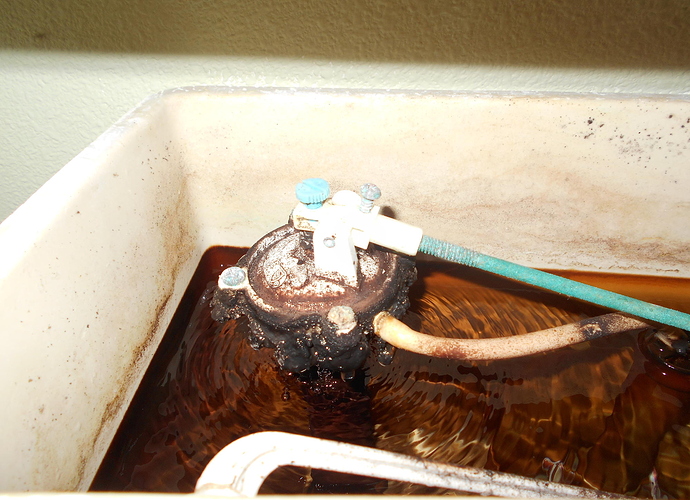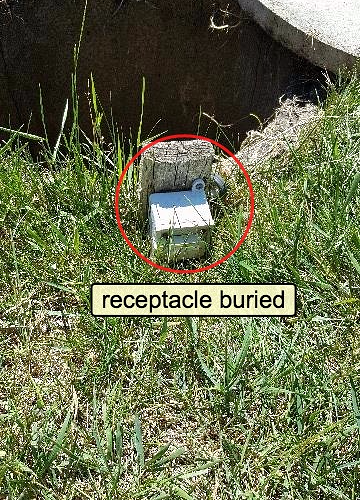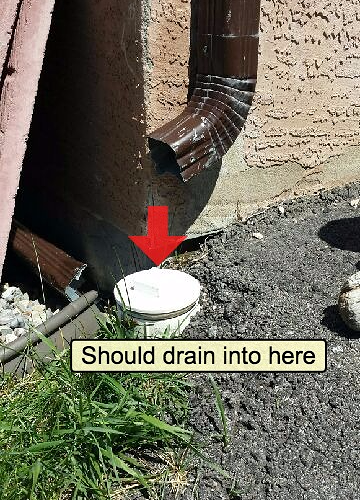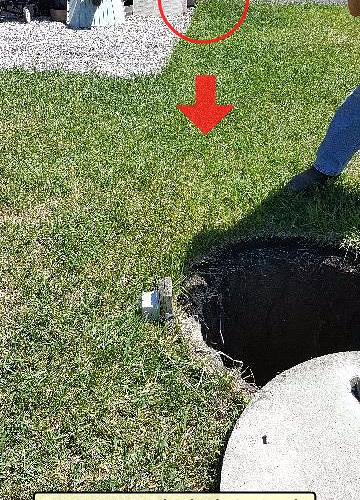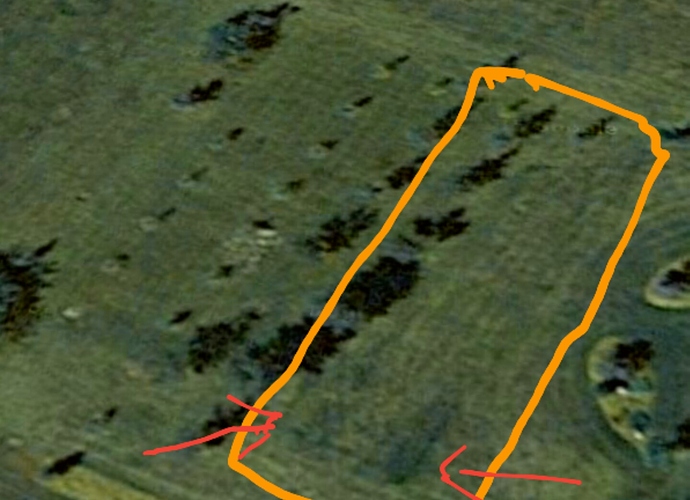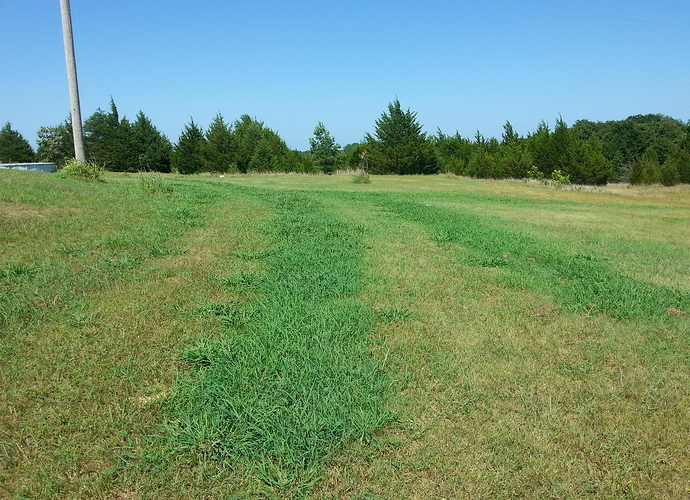Attached is the photo and essay requirement for the course.
This is a picture of the main waste line in the basement of an old home. The black pipe is heavily corroded with several leaks as seen at the base. These leaks are happening in the home before even entering the outside septic system. Although inside this is still considered unsatisfactory
I read the article septic system inspections. Having a full color visual diagram of a septic system is helpful in visualizing something that we are typically only able to see parts of due to them being buried. Although the content was good I’m a picture guy!
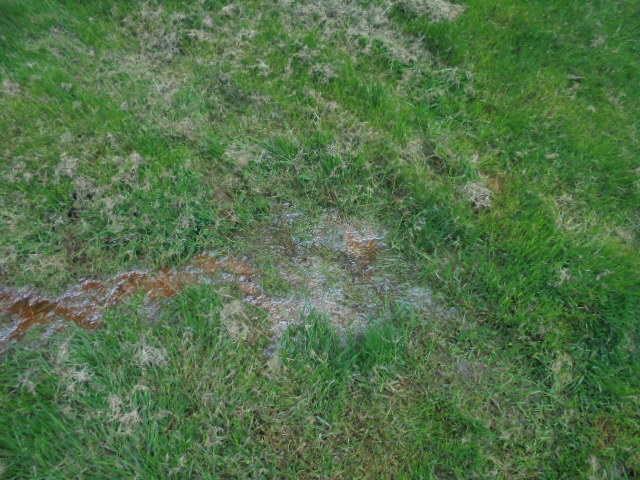
The image shows effluent discharge from a faulty septic system. This system was rated as unsatisfactory.
I inspected a septic system that had dye discharge from a hillside at the front of a home into a road culvert. I introduced the dye on a Wednesday and did not find any discharge. However, I always return 2 days later and found the discharge on Friday. I learned that returning one or two days later, as was stated in the course, can reap benefits.
Hi, everyone. Just testing this forum system out. This is a great course. Be back later. 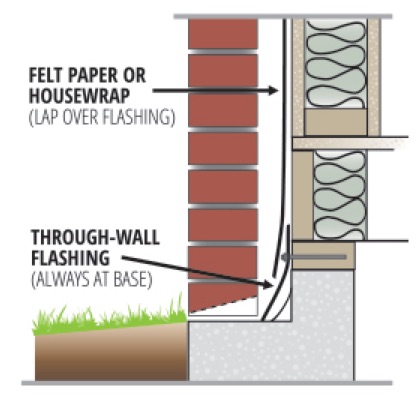
Sorry no image at this time . So I did my research on the leach bed or leaching field & leach trench .
Starting with the table water which will be the very bottom of the leach bed . This is where all material that is in the leach bed is trying to get to in the ground to spead out . From there or on top of that will be 3/4 inch rock some kind of barrier material , perforated distribution pipe abou 4inches a D-box and then your back fill dirt .
The leaching bed or field is part of the plumbing in some areas the field is where all of the housing waste water will end before it goes to the lowest point which is the water table . Dont know if I would like a home or buy one that has this system in it .
Leaching or leach bed . Water table , 3/4 inch rock , perforated Distribution pipe , D-Box , back field dirt . This is just the field there is more before things reach this area …
How to Inspect Septic Systems Essay:
The attached photo shows a sand mound type absorption area that is over saturated and it is leaching out the side. This is an unsatisfactory condition and must be corrected to bring the system back to acceptable standards. This condition should be reported to the local sewage authority or code officials.
How to Inspect Septic Systems Library Visit Essay:
I read the article on Home Inspection Equipment. As a new inspector I found it interesting to compare the items shown in the article with the tools I have assembled. Many are the same but I got a few tips for items I have in my tool box that I will be putting in my inspection bag like the telescoping magnet and mirror. There are also items like the 35’ telescoping camera pole that I will put on my wish list for after I get busy and have better cash flow.
InterNACHI Septic Inspection Course Research Assignment: Absorption Fields
The illustration below (courtesy of InterNACHI) shows the components of a typical absorption field and septic tank. The system is designed to process household wastewater eventually allowing it to return to the local environment. Continued trouble-free operation of this system is important not just for the comfort of occupants, but also for public health and environmental safety.
Several key areas covered in a home inspector’s assessment of the system include:
• Interior plumbing fixtures connecting to the septic system,
• General site drainage with particular attention paid to the area above the septic system
• Tank inlet and outlet
• Depth of scum and sludge layers
• Distribution box, pumps, or other accessory components of the system
• The absorption field
While a comprehensive functional examination is not practical during a home inspection, The unobtrusive investigation performed by a home inspector can reveal a number of observations that will assist in the homeowners decision to waive offer conditions. For example:
• Location of all major components of the system
• Identification of the loads on the system
• Identification of any bypass or other dangerous modification
• Observation of obvious damage/defect/deterioration of the system
• Review of maintenance records to establish a history
Limitations of a home inspector’s septic system investigation include:
• Unlikely to see the full tank (tank is not pumped out)
• Topical investigation of the absorption field may miss problems not already causing damage
• Any components not visible (ie. Buried wastewater or effluent pipes)
As with the home inspection, septic investigations by home inspectors are intended to be non-intrusive, non-destructive, topical reviews of the visible components of a given system. The inspection is not intended to take the place of work better completed by specialists. It is advisable to have a full inspection, including pumping of all tanks, completed upon taking possession.
I can’t attach a photo at this time and still haven’t been able to get the issue resolved.
I inspected an aerobic system. The system is located in Texas, which requires the homeowner to maintain a yearly service contract. The service provider must inspect the system at least 3 times annually. The system was about 6 years old and was inspected and serviced 2 months prior. The only issue I noted was the lack of conduit sheathing on a small portion of romex that was exposed as it exited a wooden deck where the controls were mounted. I took a couple of pics, but unfortunately I can’t upload at the moment.
Thanks,
Jeff
Here we have a picture of the working components inside the toilet tank at a recent home inspection. The parts were aged and deteriorating. The deteriorating condition of the tank components could eventually lead to the tank leaking water into the bowl and adding excess water into the septic system. AS this was an older home, the septic system had been in place for some time as well. This would be a good item to call out on the inspection as a defect with an explanation of the possible impact on the septic system.
Article: Septic System Inspections
Septic systems are probably one of the most easily forgot pieces of owning and maintaining a home because it is out of sight. Typically most people don’t even consider their septic system being maintained until there is a visible problem that leads them to having to do some sort of repair or pumping to resolve a problem. The financial impact that a failed system can have on a home owner due to lack of maintenance can be overwhelming.
**InterNACHI Septic System Inspection Assignment
**
Case Study: Pre-Purchase Inspection of a property near Okotoks Alberta
I recently inspected an acreage property served by a septic wastewater treatment system. As this was my first time inspecting septic systems, and I have no prior experience with them, I enlisted the aid of local septic professional Chad Widmer of SoilWorx. Chad is certified through the Alberta Onsite Wastewater Management Association as a wastewater designer.
The home is 13 years old, with a municipal water supply and private septic system on site. Chad and I performed the following actions during our inspection:
- Determined the location of the septic tank in relation to the property lines
- Opened the tank lid and visually inspected the risers, baffle and other components visible from the top of the riser (The client declined to have the tank pumped for this investigation)
- Observed the lot grading adjacent to the tank as well as drainage from the house
- Identified and walked the absorption field to determine if any signs of failure were present
- Identified the alarm module in the home’s utility room and tested it
Through this investigation, we concluded the following regarding this system:
- The septic tank is at risk of inundation from surface water due to the following:
a. The top of the riser is below the current grade and several feet below the grade of the house
b. The riser is made of segments of pre-formed concrete that are not sealed to each other
c. There is a downspout roughly 10 feet away at the house that is draining directly toward the tank instead of into a buried PVC drain - The electrical receptacle at the top of the riser is half buried and not safe
- There is no filter on the outlet tee
- There is no obvious sign of failure in the absorption field; however, the field is buried and contains no observation ports. Further investigation would be required to determine if it can handle the load.
- The alarm module appears to be functioning
Chad also asked a number of questions of the seller’s agent (he was onsite at the beginning and end of our inspection). Through his questions, Chad determined that the system may have functioned adequately even with additional load from the downspouts as there were only two people in the house. The new owners are a family of four with the possibility of an additional person in the near future. As a result, Chad concluded that this system is likely inadequate for the needs of the new family and may be stressed.
Our Recommendations to the family were to have a septic professional perform the following actions:
- Replace the current electrical receptacle with a new one sitting well above the normal snow level for the region.
- Add an additional riser to the stack to bring the top of the top well above grade preventing run-off and snowmelt from entering the tank
- Seal the riser segment joints to prevent surface water from entering the tank from below grade
- Add a filter to the outlet Tee
Additionally, the buyers were advised to redirect downspouts away from the septic tank into the supplied drainage system to further reduce the risk of inundation of the tank and system
Analysis:
During this inspection, we had some trouble locating the absorption field. As this is a 13-year-old system, there were no visible indicators of the location of the field. Chad suggested and inspected two possible locations. Later, after Chad left, I had the opportunity to ask the homeowner where the field was located and determined that it was in the nearer of the two possible locations. In that region, I noticed a couple of patches of greener grass. Chad was not concerned about this at the time, and I dismissed it. Later, looking at the aerial image of the site, I see that this patch is the same, and appears to be running in a possible trench. I would be interested in further examining this site by possibly digging a hole in that region and observing the trench.
The septic portion of the inspection took approximately 30 minutes including explanations and yielded information I could consider to be on par with other aspects of a standard home inspection. In this sense, it was a topical overview of the system that could give some description of the condition of the system without spending considerable time and effort exploring further. As a result, I believe this is adequate for a home inspection, but I would consider conducting a more thorough investigation as a stand alone offering.
In addition to the site investigation, I am exploring the option of seeking records and history through both the seller/seller’s agent and the local municipality, although at this time there does not appear to be a requirement to keep maintenance records.

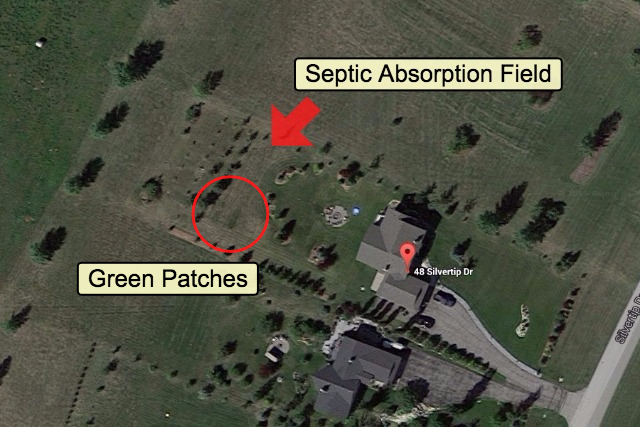
Question For The Forum:
I recently followed a local septic inspector around on an inspection to see if I could confidently offer this service in my business. While I felt that it was a valuable experience, I am left with a question I hope the InterNACHI community can answer for me.
At the time of the inspection, we couldn’t confidently identify the absorption field as there are no surface components. As a result, we looked over the two areas we thought most likely to contain the field. Later, I had the opportunity to ask the current homeowner where it was.
During the inspection I noticed greener grass in a portion of this field. The septic expert was not overly concerned about that particular spot so I let it slide. Later, looking at the arial view from Google Maps, I get a better impression of this area, and it seems to me that there are two patches of lush grass that suggest trenches.
My Question: do you think this is a field failure? Would you call this out on an inspection? What would you recommend to the home buyer in this instance?
This is a picture of the outlet side of the tank.
This is located in the secondary chamber, and is where the effluent leaves the tank to enter the leach field.
This is a picture of the two access points. Once you find one, the second one should be about 60 inched away. If you remove the lid, you should be able to tell the orientation of the tank and where the second opening is likely to be.
There is but one truck in the U.S. that has the capability of actually processing the tank contents onsite and returning the processed fluid back into the tank with most of the microbes intact.
I chose to read the article on “Ant Inspection”. Not because it has anything to do with septic systems, but because I have an ant invasion in my home. It’s interesting how ants are very similar to termites in appearance.It’s important that you seal cracks and penetrations in the walls of the home to prevent ants, insects, and other vermin from entering the home.
This photo shows the absorption field which appears
to be functioning as intended, there is no standing
water or any signs of sewage type odors.
Septic systems are an essential part of the home when municipal utilities
are not available , so regular maintenance to maintain a properly functioning system is a must. Having the tank pumped on a regular basis is one of the most important things to do, and should be done periodically.
